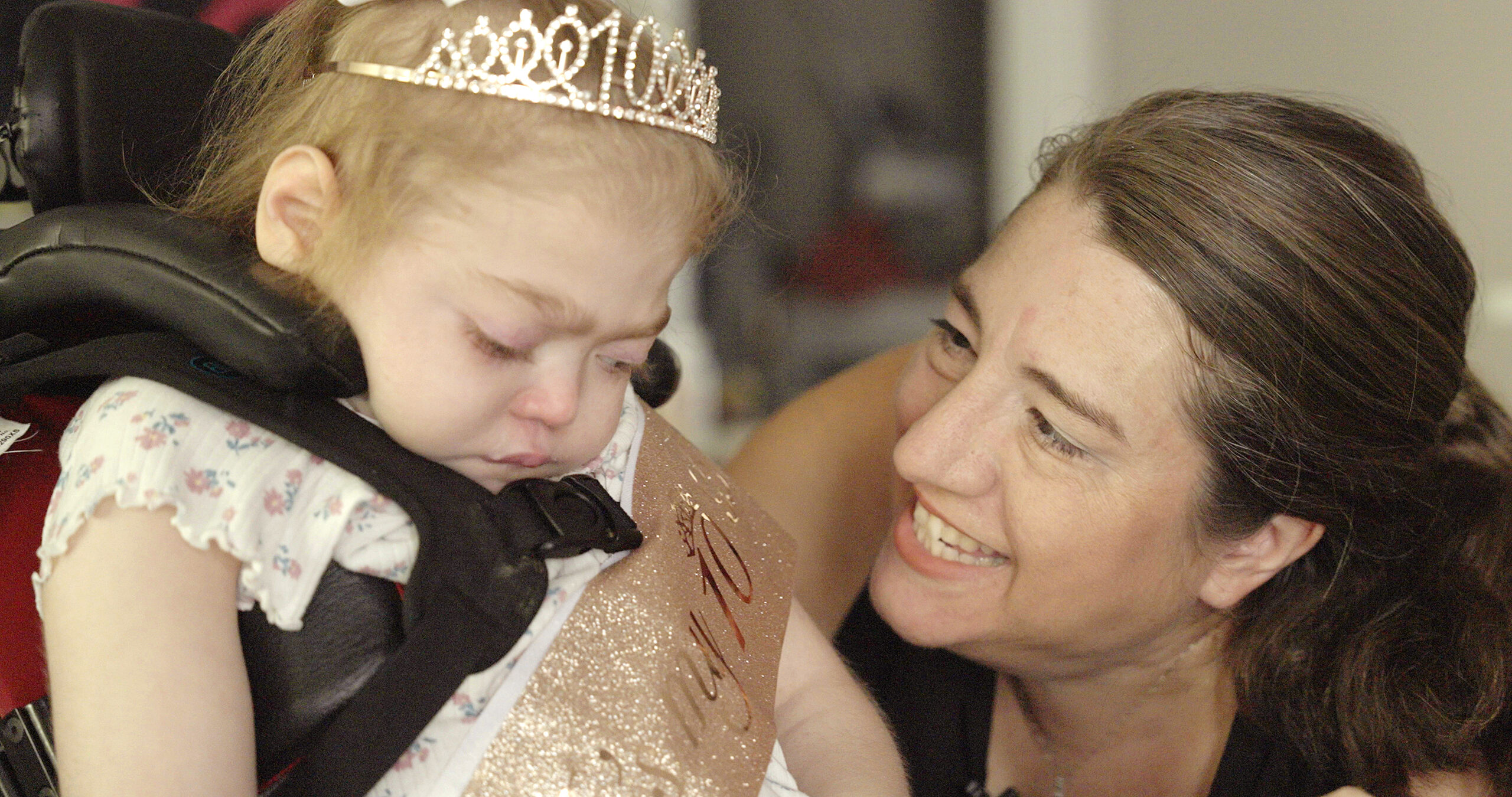“The Zebra and the Bear” sounds like a nature film, but in this case the zebra represents someone with a rare disease and the bear is the protective mama who does everything she can to save her child.
It follows the story of Amber Olsen, a mother in Mississippi who learns that her young daughter Willow has a debilitating, ultimately fatal condition, Multiple Sulfatase Deficiency, something so rare that nobody has tried to find a way to battle it.
Her learning curve is ours — she finds a few other families with the same struggles and doctors who tell her that there have only been 50 diagnosed cases worldwide.
By keeping its focus on the humanity of one family, “The Zebra and the Bear” never gets bogged down in medical detail. Their struggles through the years give rise to the obvious inadequacies of a health system in the world’s richest country.
What’s shocking is that in order to combat MSD she has to fund her own initial research that would interest researchers to taking it further. That means starting her own foundation, raising $2 million, finding labs to start initial tests involving mice before other labs would take up further studies with bigger animals (there’s a big difference between mice and rat tests, apparently), before a full clinical trial.
All this while helping raise the toddler, who has never spoken and loses the ability to walk. And raising two older daughters and having a job.
Filmmaker Patrick O’Connor, originally hired to make a fundraising video, follows the long process that began several years ago. The direction he makes for the fundraising video (“Can you say she’ll die?) sometimes pops up in the documentary — he’ll ask a question off screen to try to get to a simplified, declarative statement or engage in a conversation, usually something documentarians avoid.
We meet a string of sympathetic doctors and nurturing physical therapists and go to a fundraiser at the local model railroad museum where Amber has to interrupt the line dancing and dunking booth activities to give her presentation. A strong woman, she only cries a few times.
The money comes slowly but a lab is found who will do the testing. A couple years skip right by during which there’s covid and a divorce. A trip to Washington is not encouraging; their senator’s reps don’t even want cameras in the office.
And pharmaceutical companies are reluctant to get involved — because the treatment is a one time thing, there is no pill to sell over a period of time to what is a very limited set of patients, so the financial incentive isn’t there.
A big hope is found in the federal government, specifically a new initiative by the National Institutes of Health that would look into rare diseases. They apply to be part of that. But even if they get it, it would be a bittersweet victory — they’d help other families beset by MSD in the future, but it wouldn’t come in time to help Willow.
Quietly, “The Zebra and the Bear” is an indictment of the U.S. healthcare system, where families are left to their own to start their own foundations and fund their own research if they want to get help for a dying child. And these rare diseases aren’t even that rare — there are more than 7,000 different ones, we’re told; affecting millions. Of them, only 5 percent have FDA-approved therapies.
Underlying all of this, of course, is how the current administration has wiped out funding for scientific research at colleges and the NIH. Proposals that would cut more than $4 billion from research institutions funded by NIH would surely halt this initiative as well, if it hasn’t already.
So along with the sobering card that tells us the fate of Willow and whether she lived beyond her life expectancy of 10 should be an additional one that updates the damage done by such reckless cost-cutting.
“The Zebra and the Bear” is available for streaming on Kanopy and Prime Video.
